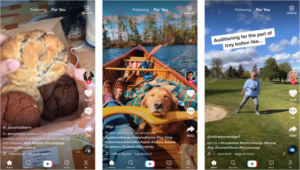Real Time Machine Learning: Use Cases In App Development
Need help selecting a company?
Based on your budget, timeline, and specifications we can help you build a shortlist of companies that perfectly matches your project needs. Get started by submitting your project details.
What is Real Time Machine Learning?
Machine learning is the ability of an AI entity to use data analysis and pattern recognition to make informed decisions. By extension, real time machine learning charges AI with making decisions based on a continuous flow of information. The tool has several clear benefits. These include a steady stream of AI decisions that provide users with a helpful, immersive experience. Still, the tool does have drawbacks. For instance, its stream method of data processing requires an expansive and expensive server infrastructure. Applications that require intense data validation, such as credit card fraud detection, also have a high potential for latency that would hamper the effectiveness of the process. It may seem complex and difficult to apply to real-world scenarios at first glance. However, real time machine learning impacts end-users in several areas.
Automatic Vehicle Recognition
In the recent past, the automotive industry is establishing itself as a bastion for tech-based innovation. From the impending reality of self-driving cars to accessible driver assistance technologies, vehicles are rapidly becoming more advanced. One automotive application that is less talked about, though, is automatic vehicle recognition. Automatic vehicle recognition relies on real time machine learning for enhanced image recognition. ML-capable surveillance cameras analyze images instantaneously. They're able to determine defining features of vehicles such as make, model, and year. Manual vehicle recognition is a time-consuming process that would make a human analyst less accurate over time. However, automatic vehicle recognition is quick and offers increased precision the more images it processes. Similar technologies such as license plate readers and facial recognition software are currently in use by law enforcement agencies. People have used them to solve crimes such as those stemming from the US Capitol riots of January 2021. These applications are criticized for the potential for bias and privacy violations. However, automatic vehicle recognition focuses on general vehicle characteristics. These characteristics can be critical to crime investigations but don't readily offer up the opportunity for prejudice or privacy infringement. Powered by real time machine learning, automatic vehicle recognition is a legitimate avenue for advancement in both the automotive and surveillance theaters.
Online Training
The internet has long been the frontier for many major technological innovations. With machine learning, this continues to be the case in the app development arena. Online training is a process that relies on a continuous stream data to generate predictive models. Rather than being batched, the data is processed sequentially. Online training is becoming a popular part of online experiences. As the Internet of things (IoT) continues to create a powerful web of data across all connected devices, machine learning allows apps to act on that data network to benefit end users. This benefit is easily seen across social media platforms, which tailor featured content to demonstrated preferences. For relatively new social media powerhouse TikTok, real time machine learning drives the online training that is key to providing users with a wholly immersive experience. The video-clip sharing platform employs real time machine learning to recognize what hashtags, creators, audio, and subject matter resonate best with each user. From there, it curates content within the user’s “For You Page” video stream that can keep them scrolling happily for long periods of time.  Source: Later TikTok enables its algorithm to capture users’ interest as quickly as possible. First-time users will comb through a variety of generic videos, some of which they may not enjoy. However, through real time machine learning, the online learning system puts together a stream of suggested videos that the user is more likely to respond positively to as they continue to use the app. With over 130 million monthly active users in the US alone, it’s clear that online training and machine learning have enabled TikTok to deliver a high-quality user experience.
Source: Later TikTok enables its algorithm to capture users’ interest as quickly as possible. First-time users will comb through a variety of generic videos, some of which they may not enjoy. However, through real time machine learning, the online learning system puts together a stream of suggested videos that the user is more likely to respond positively to as they continue to use the app. With over 130 million monthly active users in the US alone, it’s clear that online training and machine learning have enabled TikTok to deliver a high-quality user experience.
Real Time Machine Learning Heightens UX
Image recognition and online training capabilities provided through machine learning can be applied to everything from the automotive industry to social media. Through predictive models that rely on a real-time stream of data, real time machine learning has the power to maximize in-app experiences for users.
Need help selecting a company?
Based on your budget, timeline, and specifications we can help you build a shortlist of companies that perfectly matches your project needs. Get started by submitting your project details.